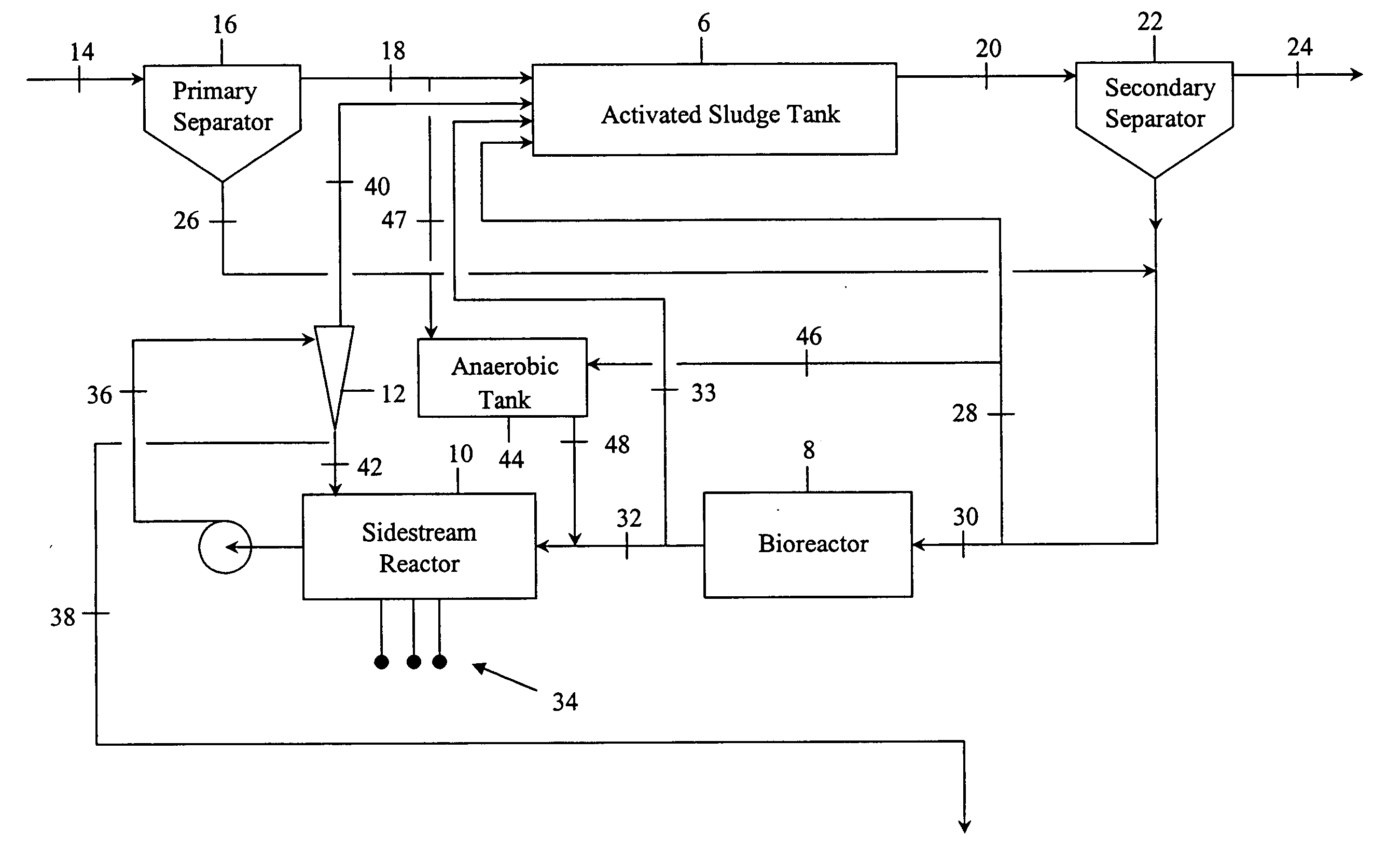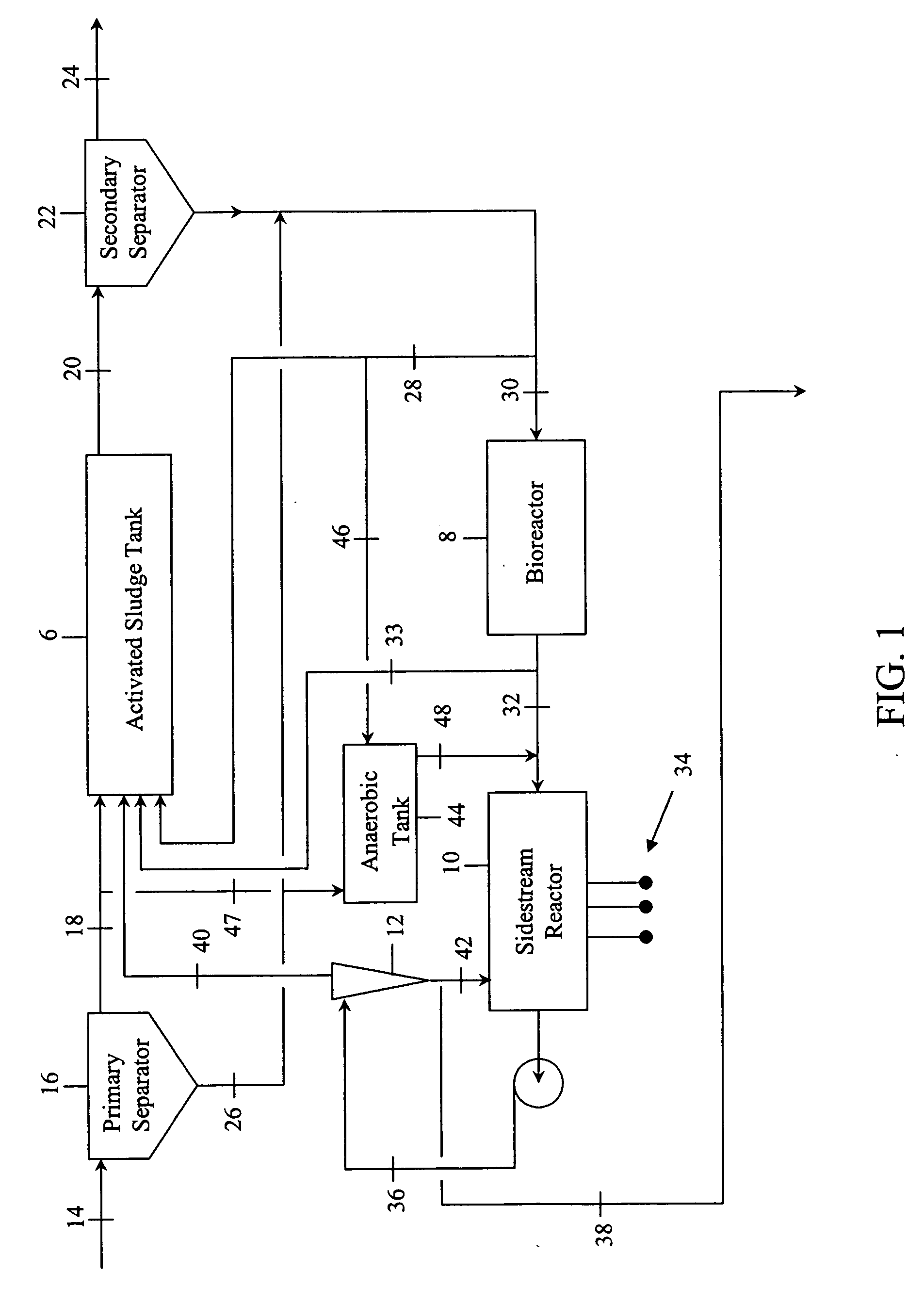Process to enhance phosphorus removal for activated sludge wastewater treatment systems
a wastewater treatment system and activated sludge technology, applied in biological water/sewage treatment, biological sludge treatment, sustainable biological treatment, etc., can solve the problems of difficult separation from sludge in wastewater, high concentration of soluble phosphates left in effluent,
- Summary
- Abstract
- Description
- Claims
- Application Information
AI Technical Summary
Problems solved by technology
Method used
Image
Examples
Embodiment Construction
[0015]FIG. 1 illustrates a schematic view of an improved wastewater treatment system embodying the invention. The invention employs an activated sludge tank 6 in combination with a bioreactor 8 to minimize the WAS generated by the treatment process. A sidestream reactor 10 and separator 12 remove soluble phosphates left in the wastewater by the low WAS process.
[0016] As shown in FIG. 1, contaminated wastewater comprising BOD, nitrogen and phosphorus may be optionally pretreated in a primary separator 16. Wastewater is transported by conduit 14 to the primary separator 16 where solids, such as grit and large particulate matter, are separated from a primary effluent. The primary effluent, or contaminated wastewater if no pretreatment is used, is transported by conduit 18 to an activated sludge tank 6 where it is mixed with a bacterial-laden sludge, or activated sludge, to form a mixed liquor.
[0017] The activated sludge tank 6 subjects the mixed liquor to two or more biological growt...
PUM
| Property | Measurement | Unit |
|---|---|---|
| pH | aaaaa | aaaaa |
| differential settling velocity | aaaaa | aaaaa |
| specific gravity | aaaaa | aaaaa |
Abstract
Description
Claims
Application Information
 Login to View More
Login to View More - R&D
- Intellectual Property
- Life Sciences
- Materials
- Tech Scout
- Unparalleled Data Quality
- Higher Quality Content
- 60% Fewer Hallucinations
Browse by: Latest US Patents, China's latest patents, Technical Efficacy Thesaurus, Application Domain, Technology Topic, Popular Technical Reports.
© 2025 PatSnap. All rights reserved.Legal|Privacy policy|Modern Slavery Act Transparency Statement|Sitemap|About US| Contact US: help@patsnap.com



